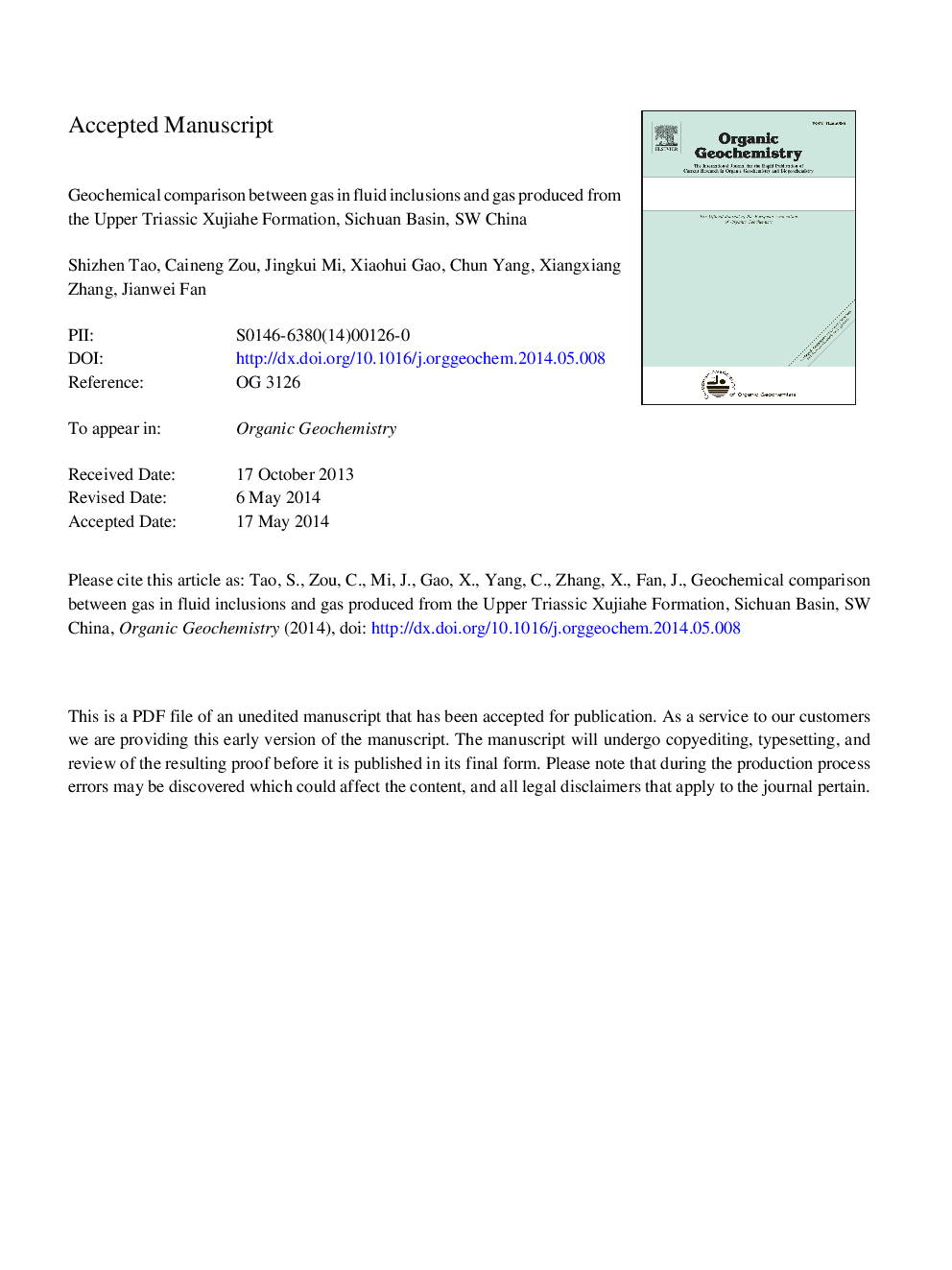| Article ID | Journal | Published Year | Pages | File Type |
|---|---|---|---|---|
| 5162311 | Organic Geochemistry | 2014 | 32 Pages |
Abstract
Natural gas in the Xujiahe Formation of the Sichuan Basin is dominated by hydrocarbon (HC) gas, with 78-79% methane and 2-19% C2+ HC. Its dryness coefficient (C1/C1-5) is mostly < 0.95. The gas in fluid inclusions, which has low contents of CH4 and heavy hydrocarbons (C2+) and higher contents of non-hydrocarbons (e.g. CO2), is a typical wet gas produced by thermal degradation of kerogen. Gas produced from the Upper Triassic Xujiahe Formation (here denoted field gas) has light carbon isotope values for methane (δ13C1: â45â° to â36â°) and heavier values for ethane (δ13C2: â30â° to â25â°). The case is similar for gas in fluid inclusions, but δ13C1 = â36â° to â45â° and δ13C2 = â24.8â° to â28.1â°, suggesting that the gas experienced weak isotopic fractionation due to migration and water washing. The field gas has δ13CCO2 values of â15.6â° to â5.6â°, while the gas in fluid inclusions has δ13CCO2 values of â16.6â° to â9â°, indicating its organic origin. Geochemical comparison shows that CO2 captured in fluid inclusions mainly originated from source rock organic matter, with little contribution from abiogenic CO2. Fluid inclusions originate in a relatively closed system without fluid exchange with the outside following the gas capture process, so that there is no isotopic fractionation. They thus present the original state of gas generated from the source rocks. These research results can provide a theoretical basis for gas generation, evolution, migration and accumulation in the basin.
Keywords
Related Topics
Physical Sciences and Engineering
Chemistry
Organic Chemistry
Authors
Shizhen Tao, Caineng Zou, Jingkui Mi, Xiaohui Gao, Chun Yang, Xiangxiang Zhang, Jianwei Fan,
